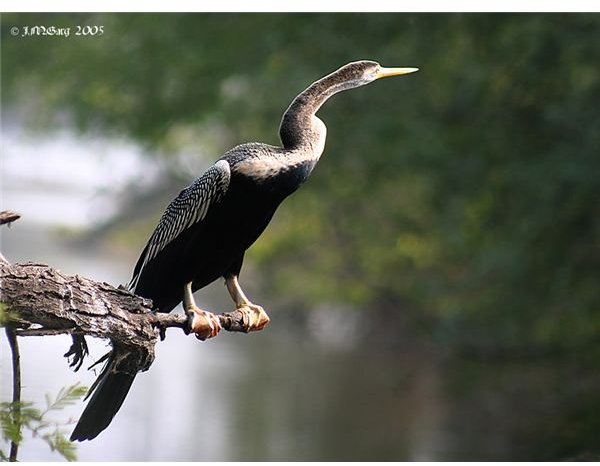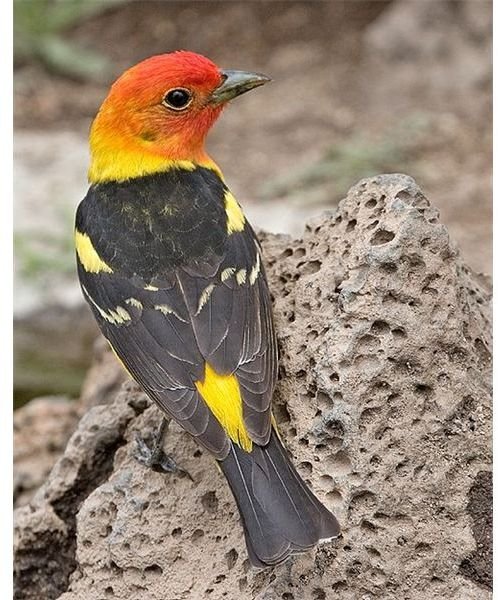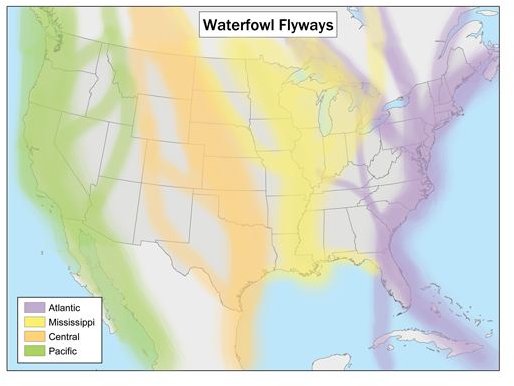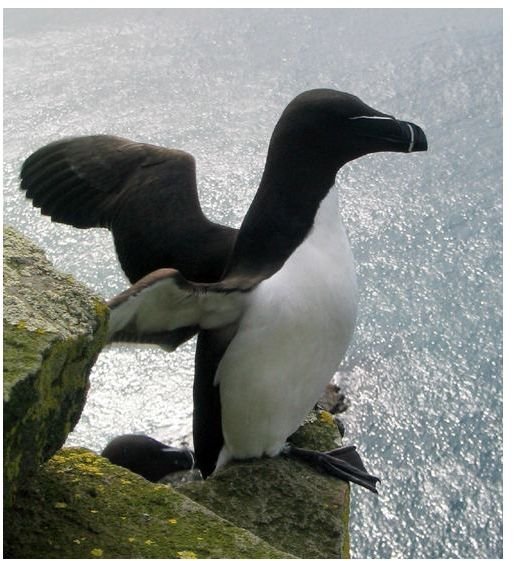Fascinating Information on North American Migratory Birds and Their Travels
Birds of a Feather, Stick Together
Bird migration is the seasonal journey that birds take as a result of changes in the availability of food, weather or habitat. Birds migrate across short distances as well as over long distances. Generally, birds will follow a flyaway over long distances. During this time they will make journeys both during the day and at night.
There are approximately 350 species of North American migratory birds. These include birds from the eastern and the western portions of the continent. Some of the Eastern birds include the Anhinga, Razorbill, Henslow’s sparrow, Orchard Oriole, Red-headed woodpecker, Broad-winged Hawk and Iceland Gull. Some of the Western birds include the Prairie Falcon, American WHite Pelican, Hummingbird, Elf Owl, Western Tanager, Yellow Grosbeak, Cassin’s Kingbird and Violet-green Swallow. Let us now take a look at some of these various species, their lifestyles and their habitats.
Eastern Birds

Anhinga
There are several species of Eastern migratory birds. The American Anhinga, for instance, is a waterbird and is sometimes referred to as the Snakebird. The Anhinga is found primarily in Southeastern United States occurring in several Texas river bottoms. These birds breed along the Atlantic and Gulf coasts from North Carolina to Texas, in Florida, and in the Mississippi Valley north to Southern Missouri and Kentucky. In the month of August, large flocks of Anhingas start their migration southward along rivers to the upland side of the Gulf Coast north to South Carolina. They primarily use the Mississippi Flyaway route to migrate. Their diet primarily consists of fish and amphibians.
Razorbill
Another North American Eastern migratory bird is the Razorbill. This bird’s habitat includes the rocky shores, cliffs and islands of the eastern part of the United States, extending as far as Maine. The Razorbill migrates offshore and tends to move south, starting from the Grand Banks of Newfoundland to the state of New England. Its diet consists mainly of fish, however, the Razorbill may consume crustaceans as well. Razorbills generally forage for their food by going underwater and lay their eggs on rocks or on the ground.
Iceland Gull
The Iceland Gull is another migratory bird that breeds on the Southern Baffin Island, Northwestern Quebec and on the islands of Hudson Bay. It migrates south to New Jersey during winters and can be found on rocky coasts, cliffs, harbors and landfills. The birds are considered omnivores and eat a diet consisting of fish, eggs and mollusks. They generally pick their prey while flying, from the surface of the water or sometimes from beneath it. Iceland Gulls are considered waterbirds and are commonly found along the coasts of the Eastern United States.
Western Birds
The Western migratory birds include the American White Pelican, Western Tanager and the Cassin’s Kingbird.
White Pelican
The American White Pelican is an aquatic bird and breeds from British Columbia and Mackenzie to Southern California, Utah and Manitoba. The gulf coast is a hot spot for the species. These birds like to reside in lakes and lagoons. While swimming, the Pelican will catch its prey, which generally consists of fish such as trout and Jack fish and in some cases amphibians as well. The only known predation of the species comes from coyotes.

Western Tanager
The Western Tanager breeds from Southern Alaska and Mackenzie to California and central Mexico. The bird’s habitat consists of open coniferous forests and lowland woodlands. They are the northernmost breeding Tanager and during winter months will migrate to Costa Rica. Their diet is composed of fruits and insects. Due to its small size, the Western Tanager has many predators including the Accipiter Hawks and Jays.
Cassin’s Kingbird
Another western migratory bird of North America is the Cassin’s Kingbird. This bird is a large flycatcher and breeds in Southern California to Montana down to Southern Utah. Migration takes place during the winter months to Central America, including the Sea of Cortez on Baja California Sur. Their diet is comprised of mainly insects. They prefer a woodland habitat, savannas and rangelands.
Their Journey
These birds follow certain migration routes or flyaways, as they have been identified. In particular, there are four major routes of migration; namely the Atlantic flyaway, Mississippi flyaway, Central flyaway and Pacific flyaway. Each flyaway consists of several individual migration routes. Going south to Panama, the flyaways converge and then spread out into South America. The North American flyaways fall along the Atlantic and Pacific coasts as well as the Mississippi River and the Rocky Mountains. However, the notion of the North American flyaways is a generalization, as many of the migrating birds do not follow these routes. These routes, however, give a good explanation of the various migrations undertaken by these birds. We will now take a look at these routes.
Atlantic Flyaway

Oceanic Route: This route mainly passes over the Atlantic Ocean, starting from Labrador and Nova Scotia reaching to the Lesser Antilles. From the Antilles, it extends to a group of smaller islands and finally into South America. Birds using this route fly during the day as well as at night. American Golden-Plovers and certain shorebirds frequently use this flyaway. The Plovers incredibly cover the entire 2,400 miles distance, sometimes without any intervals. They have been known to pass over the islands of Bermuda in flocks and sometimes even the smaller islands of Antilles without a stop. Shorebirds that live in the Arctic tundra fly southeastward across Canada and eventually reach the Atlantic coast. From there, they take the oceanic route all the way into mainland South America.
Coastal Route: The coastal route runs through the Bahamas, Cuba, Hispaniola, Puerto Rico and the Lesser Antilles to the coast of South America. American Coots, Northern Pintails, Blue-winged Teals and shorebirds spend their winters in ponds and lakes of Cuba, Puerto Rico and Hispaniola. The birds rest at regular intervals and land is never out of sight. Approximately 50 different kinds of birds from New England take the coastal route to South America. Land birds also take various other routes along the coast. One of the routes, in particular, is taken by the Bobolink, which outnumbers the other birds. As a result, the path the Bobolink takes is called the “Bobolink route”.
The Pacific Flyaway
The Pacific flyaway route extends from Alaska to Patagonia. It is followed by many of the North American migratory birds. Certain sea ducks and the Cackling Canada Goose use the coastal part of this route for their journey southward. The Canada Goose travels across the Alaskan Peninsula and also across the Gulf of Alaska to the Queen Charlotte Islands. From there, the birds follow the coast south to the Columbia River. Seabirds breeding on the northern coasts and southern coasts use this route to migrate across the Pacific. Some of the Pacific Golden-Plover migrate to parts of South Asia using the oceanic part of the route to countries such as Japan, China, Australia and some islands of Oceania. They also travel to the islands of Hawaii and other Pacific islands. The Western Tanager has its wintering grounds in southern Baja California and Southwestern and Eastern Mexico, South to Guatemala. Some of the notable locations along the Pacific flyaway include the Alaskan National Wildlife Area on Westham Island off Richmond, British Columbia, Great Salt Lake in Utah, San Diego Bay and San Francisco Bay.
The Mississippi Flyaway
The Mississippi Flyaway runs across the Mississippi River in the United States and the Mackenzie River in Canada. Central Canada and regions of the Gulf of Mexico are the main endpoints. The route narrows substantially in the lower Mississippi River Valley, primarily in the states of Missouri, Arkansas, Mississippi and Louisiana. There are many good sources of food and water as well as shelter that exist throughout the entire flyaway. Nearly half of the waterfowl and shorebirds in North America use the Mississippi Flyaway for migration.
The Central Flyaway
The Central Flyaway is located along the Great Plains in the United States and Canada. Similar to the Mississippi Flyaway, the Central Flyaway has its endpoints in regions of central Canada and near the surrounding areas of the Gulf of Mexico. Some birds use this route to even migrate across the Arctic Ocean to Patagonia. The Sandhill Cranes, White-fronted Geese and some of the smaller races of Canada Geese follow the Central Flyaway through the Great Plains. Northern Pintails and American Wigeons primarily use it to fly southward along Eastern Alberta all the way up to Western Montana. Eventually, the Central Flyaway merges with the Mississippi Flyaway between Missouri and the Gulf of Mexico.
The Season of Birds
Most migratory birds of North America return in the springtime. In addition, the migration of the birds takes place over many towns and cities that are found along the route. This is a fantastic opportunity to watch the birds as they look for food, shelter and temporary nesting grounds. The cycle of bird migration continues each year giving you the opportunity to see these amazing creatures in all their splendor and beauty.
References
1. https://www.npwrc.usgs.gov/resource/birds/migratio/routes.htm
2. https://www.backyardnature.net/birdmgrt.htm
3. https://identify.whatbird.com/obj/324/_/Cassins_Kingbird.aspx
4. https://www.birdfeeding.org/bird-identifier/east/
Image Credits
Razorbill - Iceland; WikimediaCommons/Gsd97jks
Darter; WikiCommons/J.M.Craig
Western Tanager (male); WikiCommons/www.naturepicsonline.com
Flyways Map; WikiCommons/UniteStatesFederalGovernment
